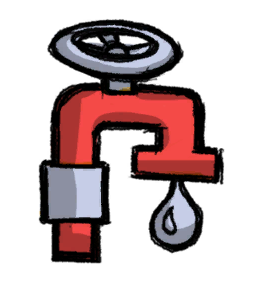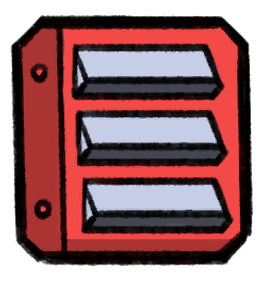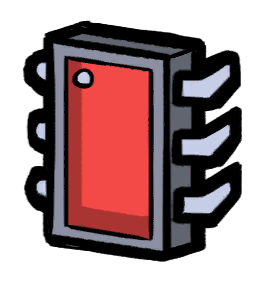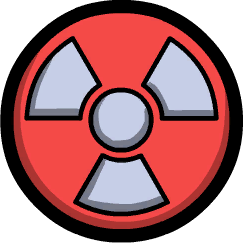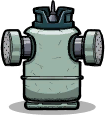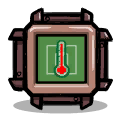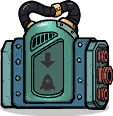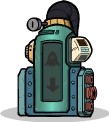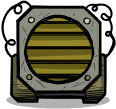Gas Pipe
Gas Pipe transports Gas between building Intakes and Outputs. Gases move from a source - like a generator - or from a Gas Pump to a sink, which could be a Gas Vent to release it to the environment, or to another building, like the Hydrogen Generator. The flow is always from an Output pipe (green or orange symbol in the Ventilation Overlay) to an Intake Pipe (white symbol).
Capacity
Each gas pipe segment can hold 1000 g of gas. The pipe system updates once per second, and a "packet" of gas can move from one section of pipe to another in that time. As such, the maximum throughput for a single pipeline is 1 kg/s.
Overlay
Gas pipes can occupy the same tiles with other buildings (except other Gas pipes). Clicking the Ventilation Overlay button in upper right will highlight all gas pipes, building intakes and outputs.
Heat Exchange
The gas content exchanges heat with the gas pipe segment, and the pipe segment exchanges heat with the tile. The thermal conductivity of the pipe segment is a major factor in the process. Among the qualified building materials, Granite has the highest thermal conductivity and Ceramic has the lowest thermal conductivity before Thermium and Insulation is available.
Note a gas pipe segment does not exchange heat with nearby segments.
Tips
- With pipes connecting more than one Output and Intake pipe, avoid the possibility of bidirectional flow in the pipe, as the game engine is currently not very clever in deciding in which direction a gas 'agent' should flow, so it might start flipping back and forth. Adding a Gas Valve or a Gas Bridge helps to force a direction.
- The Gas Pipe is not insulated, leaving its contents open to changes in temperatures. This can be used to create cooling systems by pumping insulated gases (such as Hydrogen) to an area then switching to normal pipes to have the area drain its excess heat into the gas.
- Avoid having gasses in pipes change phase to liquid, as this will damage the pipes. Damage can be prevented by decreasing the packet size to 1/10 (100 g).
- Building pipes in natural ground blocks will mine those ground blocks.
- Notice that regular pipe has no decor penalty.






